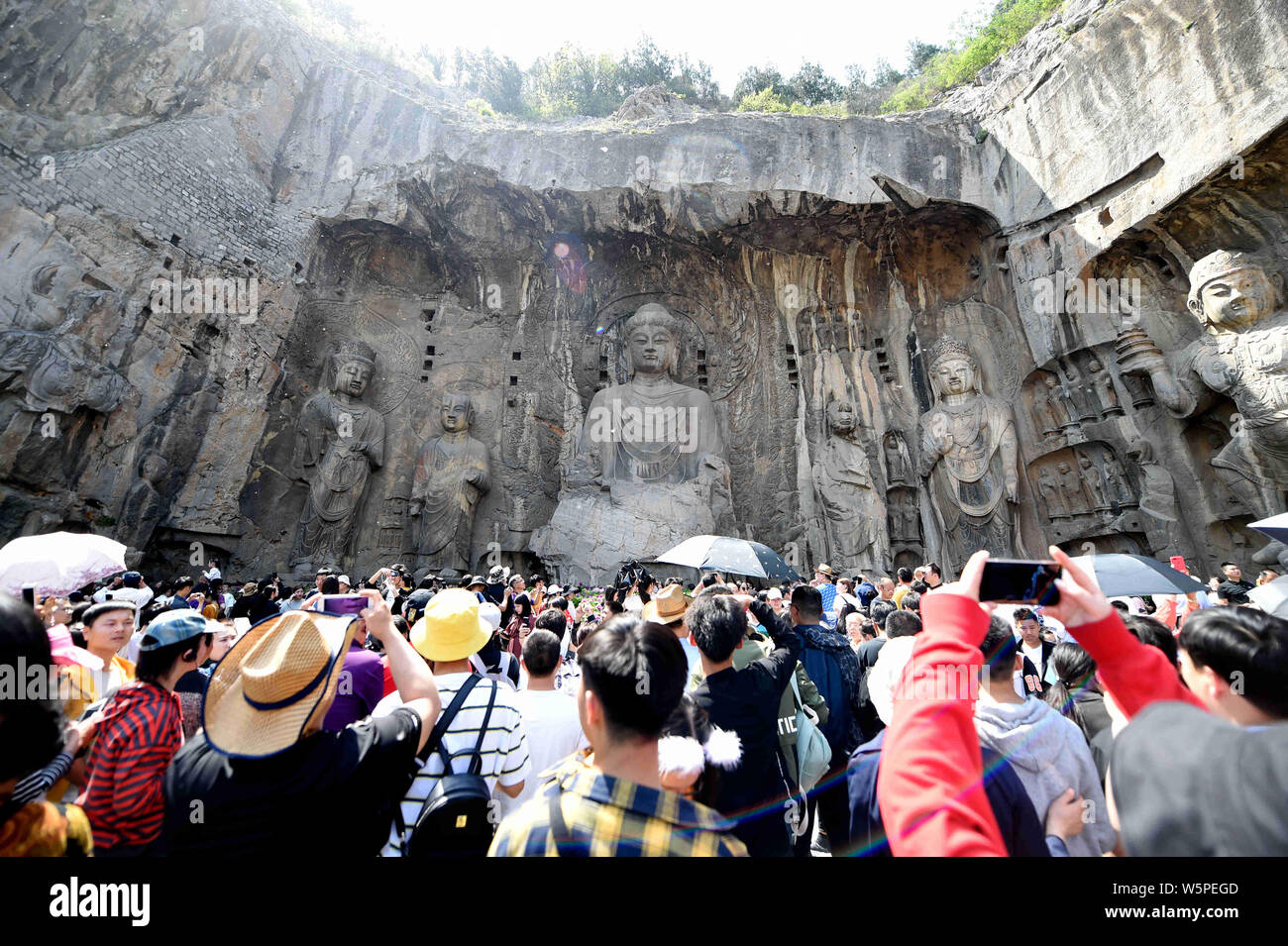Exploring Luoyang’s Dragon Gate and Historical Significance

Welcome to another exciting adventure on Jusha Travel! If you’re a traveler with a passion for uncovering the hidden gems of China, then Luoyang Dragon Gate is a must-visit. This stunning site, known as one of China’s most revered Loyang cultural landmarks, offers a deep dive into China ancient history. Picture majestic limestone cliffs carved with intricate Buddhist sculptures, all set against the flowing Yi River. Here at Jusha Travel, we love sharing tips to make your China journey unforgettable, and in this post, we’ll explore the wonders of Luoyang Dragon Gate, blending cultural insights with practical advice for your next Luoyang travel guide. Whether you’re drawn to cultural attractions in Luoyang or seeking immersive China heritage tours, this guide will inspire you to step back in time and experience the magic for yourself. https://jusha.travel/?p=497
Origins and Location of Luoyang Dragon Gate

Let’s start at the beginning—literally. Luoyang Dragon Gate, or the Longmen Grottoes, is nestled about 13 kilometers south of Luoyang in Henan Province, making it an accessible highlight for any Luoyang travel guide. The name “Longmen,” which translates to “Dragon Gate,” comes from the dramatic limestone cliffs that flank the Yi River, creating a natural gateway that has captivated visitors for centuries. This site is a prime example of Loyang cultural landmarks, where history and nature intertwine seamlessly. https://jusha.travel/?p=363
Historically, Luoyang served as the capital for multiple Chinese dynasties, cementing its role in China ancient history. The grottoes’ origins date back to around 493 CE during the Northern Wei Dynasty, when the imperial court relocated to Luoyang. As non-Han rulers, they turned to Buddhism to legitimize their power, initiating the massive carving project. For more on the site’s early development, check out this detailed resource on the Longmen Grottoes. Imagine standing at this spot, gazing at the cliffs that once symbolized imperial might and spiritual devotion—it’s a true gateway to understanding China’s rich past. https://jusha.travel/why-xians-terracotta-warriors-are-worth-the-hype/
As you plan your China heritage tours, keep in mind that Luoyang Dragon Gate is best visited in the spring or fall for milder weather. Pro tip: Wear comfortable shoes for exploring the paths, and consider hiring a local guide to uncover stories behind the carvings. This site isn’t just about history; it’s a feast for the senses, with the river’s gentle flow adding a peaceful soundtrack to your adventure. https://jusha.travel/?p=401
Historical Development and Significance

The story of Luoyang Dragon Gate unfolds like a captivating epic, evolving through various dynasties and leaving an indelible mark on China ancient history. It all began with the Northern Wei Dynasty in the 5th century, but the site’s true expansion came during the Sui and Tang Dynasties. Under Emperor Yang of the Sui Dynasty, the southern gate of Luoyang was aligned with the cliffs, embedding the “Dragon Gate” identity into the landscape and tying it to imperial symbolism. https://jusha.travel/hiking-trails-china-guide/
The Tang Dynasty (618–907 CE) marked the golden age, with unprecedented growth fueled by royal patronage. Empress Wu Zetian, China’s only female emperor, played a pivotal role, sponsoring massive sculptures like the colossal Vairochana Buddha. This blending of politics, religion, and art highlights why Luoyang Dragon Gate stands as one of the top culturalLenovo attractions in Luoyang. For insights into this period, explore this video on historical sites in Luoyang, which dives into the site’s political intrigue.
Culturally, the grottoes reflect how Buddhism adapted in China, merging with local traditions. Interesting fact: Over 100,000 sculptures and 2,000 caves were created here, showcasing exquisite calligraphy and artistry that influenced East Asian culture. As a traveler, you’ll appreciate how this site bridges ancient practices with modern appreciation—perhaps pairing your visit with a local tea ceremony to savor Henan Province’s flavors, like the aromatic Luoyang peony tea, which symbolizes prosperity in Chinese culture.
If you’re mapping out your itinerary, aim to spend at least half a day here. Download a translation app to read the inscriptions, as they offer fascinating glimpses into daily life from centuries ago—a nod to China’s innovative technology in travel today. https://jusha.travel/top-10-must-visit-cities-in-china-for-2025-adventures/
Artistic and Cultural Impact of Luoyang’s Treasures

Delving deeper into the artistic wonders of Luoyang Dragon Gate reveals why it’s a cornerstone of Loyang cultural landmarks. This UNESCO World Heritage Site boasts an array of sculptures that narrate tales of faith, power, and creativity, making it a highlight for any China heritage tours. The intricate carvings, from massive Buddhas to delicate inscriptions, exemplify the pinnacle of Chinese Buddhist art, influencing sites across Asia.
One standout is the Fengxian Temple cave, home to the towering Vairochana Buddha, believed to be modeled after Empress Wu Zetian. This monument not only showcases artistic mastery but also the intersection of gender and power in China ancient history. For a comprehensive look, refer to resources like the Buddhist Cave Shrines of Longmen, which detail the spiritual and historical layers.
Culturally, Luoyang Dragon Gate offers insights into China’s evolving identity. During your visit, you might encounter performances of traditional Henan opera nearby, blending music and storytelling—a nod to the region’s vibrant heritage. Food enthusiasts should try local specialties like Youpo noodles or mutton soup, which reflect the hearty flavors of central China and provide a delicious break from exploration.
In terms of practical tips, use apps like WeChat for audio guides or to connect with fellow travelers. This site’s accessibility, with well-maintained paths and nearby amenities, makes it ideal for families or solo adventurers seeking cultural attractions in Luoyang. Remember, sustainable tourism is key—help preserve this wonder by sticking to designated areas.
Practical Tips for Your Luoyang Adventure
While the history is mesmerizing, let’s get practical. As part of your Luoyang travel guide, visiting Luoyang Dragon Gate should be seamless and enjoyable. Start by planning your trip during off-peak seasons to avoid crowds, allowing you to fully immerse in the site’s serenity. Public transportation from Luoyang city center is straightforward, with buses running regularly, or opt for a taxi for a quicker ride.
To enhance your experience, consider joining guided China heritage tours that include Luoyang Dragon Gate, often combining it with other sites like the White Horse Temple. These tours provide cultural context and insider stories, such as the legends of dragons guarding the gate, which tie into Chinese folklore. For more background, visit the Luoyang entry on Britannica, which covers the city’s broader historical significance.
Don’t forget to pack essentials: sunscreen, water, and a good camera to capture the details. If you’re into technology, use AR apps that overlay historical reconstructions onto the site, bringing China ancient history to life in real-time. After your visit, unwind with a meal at a local restaurant—try the famous Luoyang Shui Bo, a refreshing dish that pairs perfectly with the day’s discoveries.
Conclusion
In wrapping up our journey through Luoyang Dragon Gate, we’ve uncovered the layers of history, art, and culture that make this site an essential stop on any China heritage tours. From its origins as a Northern Wei project to its flourishing under the Tang Dynasty, Luoyang Dragon Gate stands as a testament to China ancient history and one of the finest Loyang cultural landmarks. These cultural attractions in Luoyang not only educate but-sal also inspire, offering a glimpse into the enduring spirit of Chinese civilization.
Here at Jusha Travel (jusha.travel), we’re passionate about helping you create lasting memories. Whether you’re planning your next trip or reflecting on past adventures, we hope this guide has sparked your curiosity. We’d love to hear your thoughts—share your experiences in the comments below, visit jusha.travel for more inspiring articles, or explore related posts on other Loyang travel guide destinations. Safe travels, and let’s keep discovering the wonders of China together!




